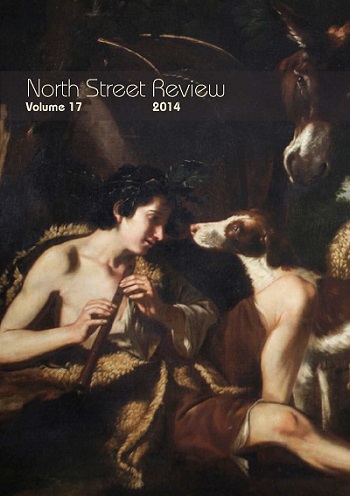The Tools of War and Industry: The Erasure of the Family in Käthe Kollwitz's Der Krieg
Main Article Content
Abstract
Käthe Kollwitz is unquestionably one of the most significant artists of the modern period. As seen through her 275 prints, Kollwitz’s visual language is both poignant and universal, allowing for lasting international acclaim. Traditionally, her work has been overshadowed by readings of her subject matter as a nearly fanatical obsession with the tragedies of life. Indeed, her persona has become entangled in a myth of self-torment and oppression. This article argues for the existence of a polarity within her work which has rarely been explored before. This polarity is revealed in several of her works including one of her most celebrated series, Der Krieg. I evaluate Kollwitz’s work beyond the simple answer of human emotions, in the process revealing a complexity beyond just tragedy. Kollwitz was always a political artist and her work is saturated with radical ideas concerning women, the role of the family, and the public sphere. Apart of a larger work, this article tries to examine the series, Der Krieg as a predecessor to the concepts often linked with modern feminist thought. I argue that Der Krieg challenges the stability of the nuclear family by highlighting the necessity of the community. This challenge aimed to free women from their domestic chains, thereby adding domestic life to Germany’s national reforms following World War I. Kollwitz once stated that she wanted “to cultivate the seed that was placed [within her] until the last small twig had grown.” Her artworks, spanning four decades, have continued to serve as the seeds for other’s ideas and implanted within many viewers ideas for a better future.
Article Details

This work is licensed under a Creative Commons Attribution-NonCommercial 4.0 International License.
Authors who publish in this journal retain copyright and are required to grant a licence to the journal to allow distribution and reuse, as described in the following agreement.
Author’s grant of rights (Licence to publish)
The author grants to the North Street Review: Arts and Visual Culture, the following:
1. An irrevocable non-exclusive right to reproduce, republish, transmit, distribute, and otherwise use the Work in electronic and print editions of the Journal and in derivative works throughout the world, in all languages, and in all media now known or later developed.
2. An irrevocable non-exclusive right to create and store electronic archival copies of the Work, including the right to deposit the Work in open access digital repositories.
3. An irrevocable non-exclusive right to license others to reproduce, republish, transmit, and distribute the Work in both print and electronic form under a Creative Commons Attribution-Non Commercial [BY-NC] Licence
Author’s retained rights
The Journal supports Open Access to scholarly work and applies the Creative Commons licence to ensure access and free use for the widest possible audience. This agreement means that copyright in the Work remains with the Author and the Author retains the right to reuse the article. Provided proper attribution is given and the use is non-commercial, authors are encouraged to use the article in the following ways:
- to deposit the published version in institutional repositories or on a personal website
- to republish in a thesis or book
- to present the article at a meeting or conference
- to use all or part of the article for lecture or class room purposes.
Third party content
Where possible, third party content has been cleared for use under the Creative Commons Attribution-Non Commercial [BY-NC] Licence. In some cases, content is included in Works that is available under a different licence, or with All Rights Reserved. If in doubt, users should ask for permissions prior to re-using any third party content contained in North Street Review: Arts and Visual Culture.
